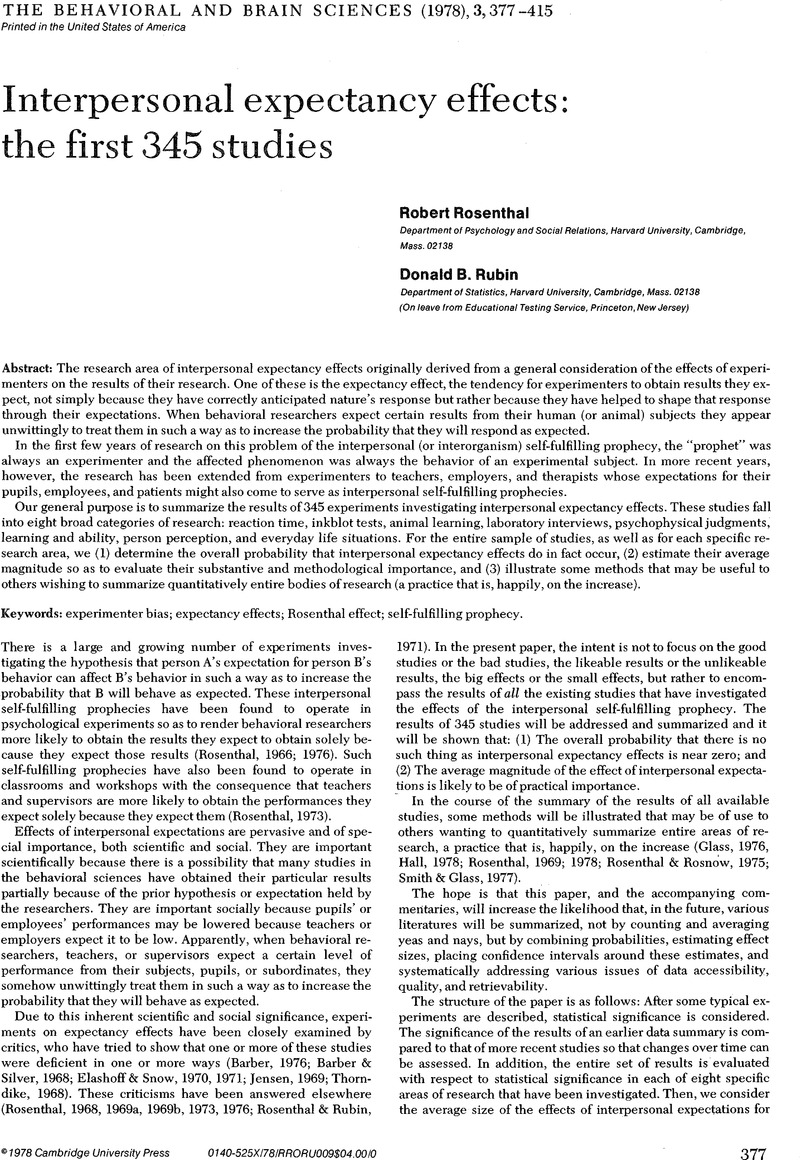No CrossRef data available.
Article contents
Expectancy research: the question of quality
Published online by Cambridge University Press: 04 February 2010
Abstract
An abstract is not available for this content so a preview has been provided. Please use the Get access link above for information on how to access this content.

- Type
- Open Peer Commentary
- Information
- Copyright
- Copyright © Cambridge University Press 1978
References
REFERENCES
Finn, J.Expectations and the educational environment. Review of Educational Research. 42:387–410, 1972.CrossRefGoogle Scholar
Milmoe, S., Rosenthal, R., Elaine, H. T., Chafetz, M. E. & Wolf, I.The doctor's voice: Postdictor of successful referral of alcoholic patients. Journal of Abnormal Psychology. 72:78–84, 1967.CrossRefGoogle ScholarPubMed
Petrie, H. Theories are tested by observing the facts: or are they? N.S.S.E. Yearbook, 47–73, 1972.CrossRefGoogle Scholar
Thorndike, R. L.But you have to know how to tell time. American Educational Research Journal. 6:692, 1969.Google Scholar
Wilkins, W. E.Teacher expectations and classroom behaviors: A test of the Rosenthal and Jacobson model. Selected Documents in Psychology Monograph. 5:1–47, 1975.Google Scholar
Wilkins, W. E.The concept of a self-fulfilling prophecy. Sociology of Education. 49:175–183, 1976.CrossRefGoogle Scholar


